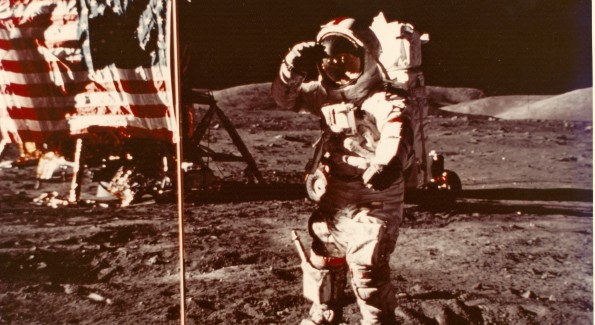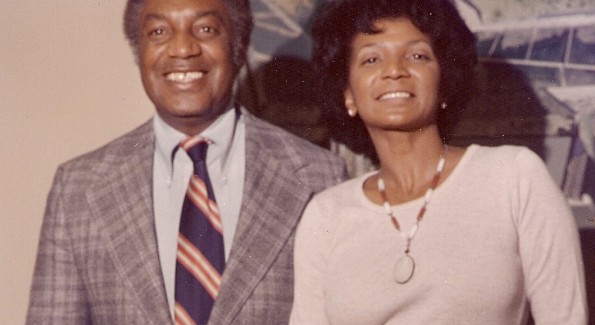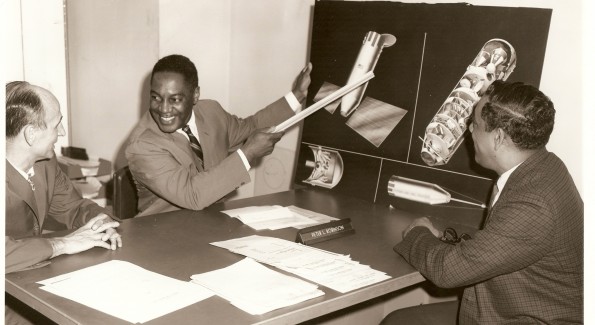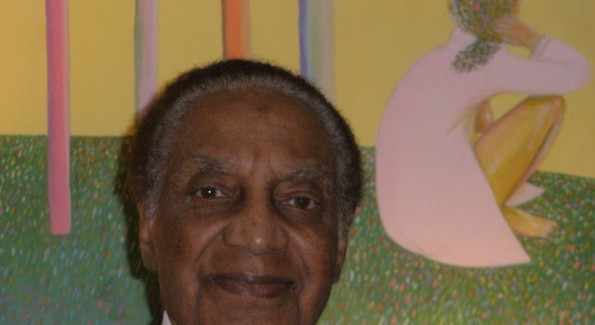Peter L. Robinson, Jr. played a dynamic role in what is widely considered mankind’s greatest scientific accomplishment, placing man on the moon.
By Adoria Doucette
The engineering, political and psychological challenge of leaving Earth’s atmosphere is a voluminous story involving the most talented individuals in the world. Without Peter Robinson’s graphics, long before advanced computer technology existed, NASA would not have blossomed as it did. Robinson’s visual mastery made great things possible for the space agenda. As Director of the Graphics and Management Presentations Division at NASA headquarters in Washington DC, Peter L. Robinson Jr. ascended to play a pivotal role in the success of NASA‘s major programs. In 1973, he was awarded NASA’s Exceptional Service Medal for his outstanding contribution to the Apollo Program. Robinson’s father was the son of slaves, but he vigorously pursued education, and distinguished himself as one of the first African American officers of World War I.
Mr. Robinson Sr. was a graduate of Miner Normal in 1912. In 1923, he was a member of the first faculty of Randal Jr. High School prior to his graduation from Howard University Law School in 1924. As a peer of Duke Ellington, when Washington DC was the mecca for African American thought and culture, Mr. Robinson Sr. dedicated 44 years of Industrial Arts and Military Science instruction to the public school system of Washington, D.C. His years at Armstrong High School may have been his most influential.
Robinson himself graduated from Armstrong and then attended Howard University for three semesters prior to preparing to enter the draft for WWII. Robinson credits his three year military service for reinforcing and fine tuning the discipline and work ethic instilled in him by his elders. He graduated from Howard in 1949, after studying under the eminent Art faculty members James Porter, Lois Jones, and James Wells. With a deep connection to nature and a lifetime of artistic curiosity, Robinson embarked on a career as an illustrator that would literally lead his thoughts and talents into the heavens. After breathtaking success as a cartographer for the 1950 Census Robinson managed the flow of information at the General Services Administration before being recruited to help design the War room at Andrews Air Force Base.
In 1957, the Polaris Missle Program, under the Navy Department, heard about what Robinson Jr. was doing at Andrews Air Force Base with incorporating art and graphics into the Management Center/War Room concept of Information Management, and offered him a position doing the same thing for the Polaris Missile Program.
At the peak of the Cold War, the three year-old NASA recruited Robinson for his exceptional talent “Art was the catalyst through which the managers could communicate with the engineers and with the physicists, scientists, with Congress, and with the Defense Department.” Artwork was often the only means to communicate the goals of the Apollo Program and subsequent launches.
Robinson would rise to top secret clearance for his crucial work during budget cycles and launch periods, earning the highest level of professional and personal respect from the 20th century’s pre-eminent rocket scientist Wernher Von Braun first director of the Marshall Space Flight Center and later Deputy Associate Administrator for Planning at NASA headquarters. Von Braun was a former Nazi, and Robinson a grandson of African slaves, yet the spirit of the nation’s capital to prevail on an industrial, political and patriotic level synthesized in excellence being the great equalizer at NASA and Peter Robinson Jr. became the Director of Graphics and Management Presentations Division, receiving special accolades from Presidents Nixon and Johnson as well as the Director of NASA and Apollo 17 Astronauts for his unique and pivotal role in the success of the US Space program.
Although most of his professional work is classified and property of the US government, Robinson has unleashed his creative brilliance through private pieces, coveted by collectors all over the world. Robinson’s work has been featured in the prestigious Arts in the Embassies Program through the State Department and appeared in 4 embassies around the world. Since retiring from NASA in 1977, Robinson has conducted several dozen major one person and group exhibitions in Washington and his work is a fixture of several major institutions and private collections. Over the last 30 years Mr. Robinson has been a consistent presence within the artistic philanthropic community, playing a role in the expansion of art and cultural programs throughout the city in recent decades. For those with the sensibility to carefully discover new things the entire story of our nation’s capital city is mesmerizing. As Washington DC was the country’s largest African American city during his childhood, examples of excellence, pride and integrity were abound; at 88 years old, still painting everyday and stronger and smarter than ever, Peter L. Robinson, Jr. represents the finest of Washington DC.
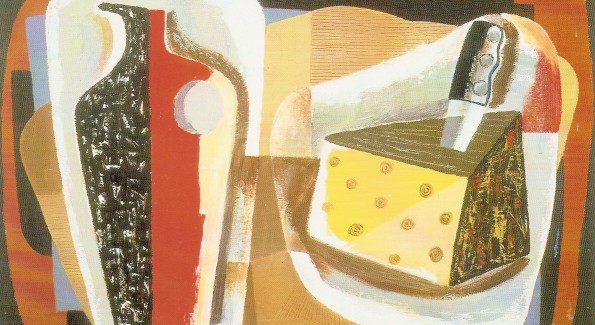
"Wine & Cheese" Mr. Robinson's most celebrated piece has been exhibited at the Corcoran Gallery of Art and the Barnett Aden Gallery. It is currently on display at the David C. Driskell Center

